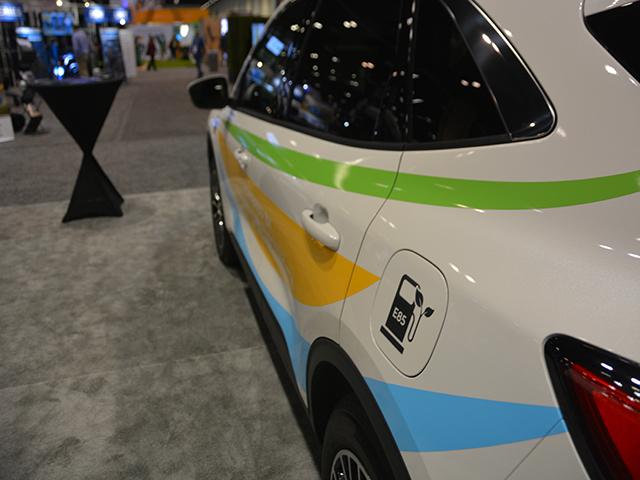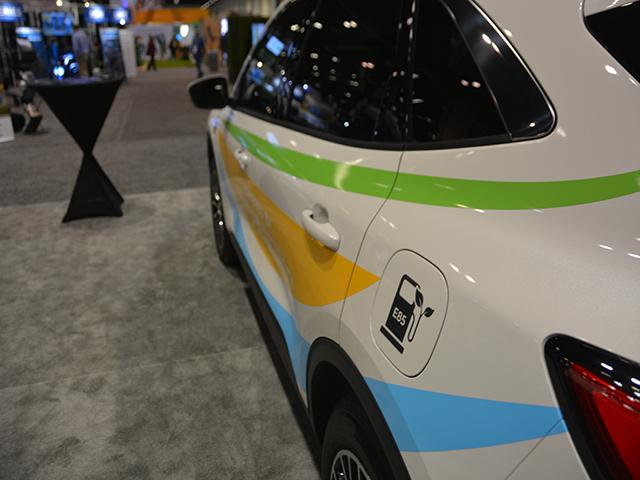Ag Policy Blog
Biden Emissions Rule Would Affect Pickups, Heavy-Duty Vehicles Farmers Rely On
OMAHA (DTN) -- Farmers and other blue-collar Americans who rely on their pickups and potentially semi-trucks could have fewer buying options over the next decade under the latest green energy proposal by President Joe Biden.
The Biden administration on Wednesday made its most aggressive move toward pushing the country to electric vehicles with EPA proposals for tighter vehicle emission standards for both light- and medium-duty vehicles, as well as heavy-duty trucks used in construction and hauling freight. The tighter emission standards, which would start in 2027, would likely lead to electric vehicles (EVs) accounting for roughly two-thirds of light-duty vehicles and nearly half of medium-duty vehicle (pickup) sales by 2032.
Both fossil-fuels industry and biofuels industry groups criticized the proposal and its impact on consumers.
The Renewable Fuels Association said the Biden administration is "blatantly tipping the scales in favor" of EVs. RFA stated EPA overlooked the near-term benefits and carbon reductions that could come from a high-octane, low-carbon ethanol blend.
"Today's EPA proposal would effectively force automakers to produce more battery electric vehicles and strongly discourage them from pursuing other vehicle technologies that could achieve the same -- or better -- environmental performance at a lower cost to the U.S. economy and American families. We urge EPA to reconsider its proposal and instead adopt a technology-neutral approach that treats all low-carbon transportation options fairly and equally," said Geoff Cooper, president and CEO of RFA.
P[L1] D[0x0] M[300x250] OOP[F] ADUNIT[] T[]
Emily Skor, CEO of Growth Energy, echoed that view, stating EPA's proposed rules "show a lack of imagination and ignore the reality that even by the most aggressive estimates, internal combustion engines will still occupy more than half of the light-duty vehicle marketplace by 2040. This proposal would constrict innovation and risk, leaving millions of tons of carbon reductions on the table -- setting us on a path towards eliminating any role for proven, emissions-reducing biofuel blends precisely when we should be embracing a strategy that supports multiple low carbon options."
The American Petroleum Institute called the proposal "deeply flawed," adding it is a "major step toward a ban on the vehicles Americans rely on." EPA cited that the proposal would reduce oil imports by roughly 20 billion barrels. API stated, "As proposed, this rule will hurt consumers with higher costs and greater reliance on unstable foreign supply chains."
A trade association for electric vehicles, the Zero Emission Transportation Association, praised the EPA proposal, citing is as "the strongest U.S. performance-based emission standards to date."
The White House cited the proposals would avoid nearly 10 billion tons of carbon dioxide emissions through 2055, "equivalent to more than twice the total U.S. (carbon dioxide) emissions in 2022," EPA stated.
EPA added that the number of EV sales "has tripled while the number of available models has doubled," since President Biden took office in 2021. Still, EV sales only made up less than 6% of total vehicle sales in 2022, up from 3% of sales in 2021.
EPA also pointed to 130,000 public chargers across the country and pointed to industry commitments to build out $120 billion "in domestic EV and battery investments."
Under the proposals, light- and medium-duty vehicles -- essentially full-size pickups and vans -- would have to meet tighter emissions standards starting in 2027. Initially, the move would push the auto industry to "drive widespread use of filters to reduce gasoline particulate matter emissions" but also increase the use of carbon-dioxide-reducing technologies for liquid-powered vehicles. By 2032, EPA estimates EVs would account for 67% of light-duty vehicle sales, mainly pickups. And 46% of sales for new larger medium-duty panel vans would be EV as well.
A second proposal deals with heavier-duty vehicles, including delivery trucks, refuse haulers or dump trucks, public utility trucks, transit, shuttle, school buses and trucks typically used to haul freight -- semi-trucks. They would have to meet lower pollutant criteria standards for 2027 and beyond as well.
In citing the emission proposals, EPA pointed to "significant health benefits by reducing fine particulate matter that can cause premature death, heart attacks, respiratory and cardiovascular illnesses, aggravated asthma, and decreased lung function." EPA cited the benefits of the proposed rules would exceed costs by at least $1 trillion.
Chris Clayton can be reached at Chris.Clayton@dtn.com
Follow him on Twitter @ChrisClaytonDTN
(c) Copyright 2023 DTN, LLC. All rights reserved.






Comments
To comment, please Log In or Join our Community .